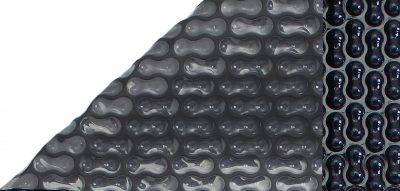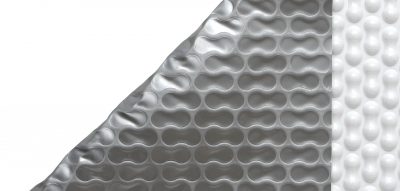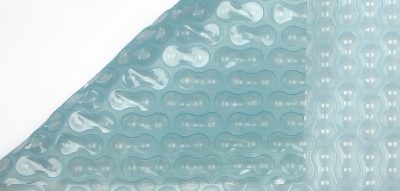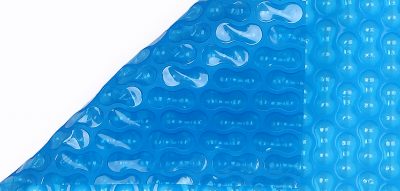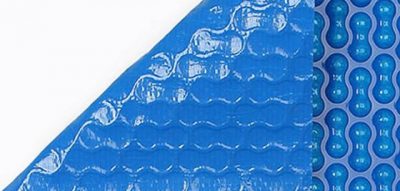Why use a bubble cover with GeoBubble™ technology?
- Save water
- Retain and add heat
- Reduce chemical demands
- Reduce debris
- Save money
- Recyclable
An outdoor swimming pool loses 70% of its heat through evaporation. This water loss is not just a consumptive waste of a vital resource worth preserving but a costly one. Evaporation is an energy consumptive process reducing the temperature of the pool.
By simply covering your pool, 98% of evaporative losses are prevented, the pool is insulated and debris entering the pool is reduced. Covering the pool will retain the water resource, increasing temperature within the pool and reducing chemical consumption.
Just covering the water with a standard GeoBubble™ Light Blue bubble cover. you will save energy and resources.
All bubble covers with GeoBubble™ technology are recyclable. Marked at the weld edge LDPE 4 and can be reprocessed accordingly.
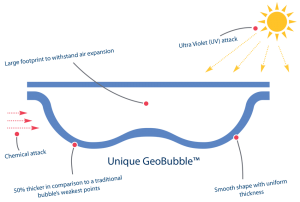
High Performance bubble cover material
Our high performance 500 micron Guard products are bubble cover materials scientifically designed to yield maximum savings in respect of heating or cooling and chemical consumption when covering a swimming pool.
Our Guard materials have a 8 year+ expected lifespan on a correctly balanced pool*, with a 8 years pro rata manufacturer’s warranty. The Guard products are formulated with a unique additive package to ensure this lifespan is met. Based on in-field research in collaboration with two British universities, a Guard pool cover will have paid for itself in only one year, given the savings achieved on the pool’s maintenance costs / overheads.
Always keep the pool water within the recommended Industry standards range to ensure your bubble cover’s lifespan and warranty is not compromised.
Woven product range
Tougher, longer lasting materials, with all the benefits of GeoBubble™ technology
Our woven product range is tougher, stronger and longer lasting bubble cover material, with all the benefits of GeoBubble™. Perfect for commercial applications such as school or community swimming pools, these materials will provide the great cost and energy savings you’d expect from GeoBubble™ for much longer.


